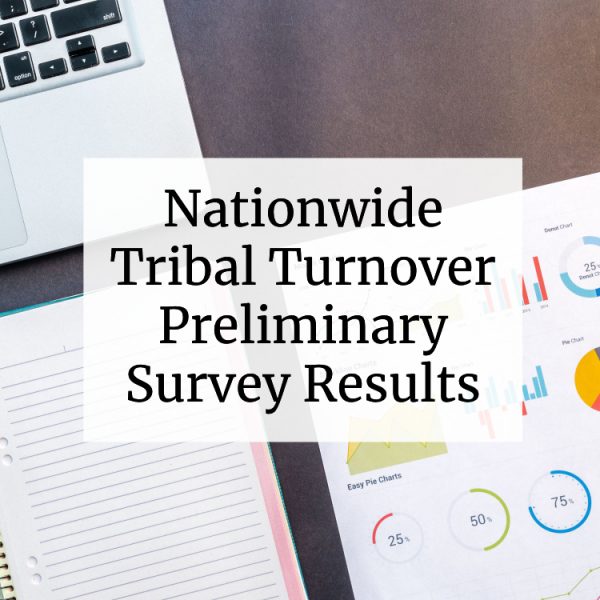Turnover is one of the most significant people risks to any leadership team, and tribal organizations are experiencing the impact of turnover like never before. In response to this overwhelming challenge, we partnered with NNAHRA to initiate a collaborative study, and the response was overwhelming! We want to thank everyone who contributed to the study. Your insights and best-practices are always valuable and help shape and improve the overall landscape of HR in Indian Country. We’re excited to share the preliminary results.
Who Participated in the Study?
Both tribal enterprise and Tribal governments across the nation were represented. Over 50,000 employees were represented by roles from HR generalists to Chief Organizational Development Officer.
Preliminary Findings
Two critical areas of focus for this study include tenure and turnover. When asked about how long has the highest level staff person been with the Tribe or Enterprise, the results showed that the majority of the staff (51.7%) had been with the organization for less than three years. As it relates to turnover, 41% of organizations experience over 30% turnover, and a whopping 22% of organizations experience greater than 50% turnover. What’s surprising is that 14% of organizations don’t measure it or consider its cost.
Factors Contributing to Turnover
When asked about factors that contribute to turnover, respondents listed causes related to internal, external, and retention factors.
- External: Externally, they believe that the local economy does not attract or retain the talent the tribe needs to grow. They also cite intense competition for talent from businesses & organizations outside the tribe as well as wage and career growth factors.
- Internal: Internal challenges that contribute to turnover include requirements for drug testing, lack of career or succession planning, and job-specific training.
- Retention: Respondents believe that more effective leadership, work/life balance, and recognition programs would contribute to the reduction in turnover at their organizations.
Best-practices to Prevent Turnover
According to The Work Institute 2018 Report, 77% of turnover is preventable. However, preventing it takes intention, clear and documented processes, and the right tools positioned in the appropriate phase of the employee lifecycle.
Some of the best-practices incorporated by survey respondents include:
- Onboarding: When an employee is hired, they are required to meet with an HR representative within 90 days of their hire date. This helps ensure they’ve received what they need to contribute to the organization and identifies any issues that need to be addressed. Since 40% of employees leave within the first year, this simple, yet effective practice can significantly reduce the cost of hiring.
- Exit Interviews: Delaying the exit interview often provides more candid feedback. Former employees have had the chance to distance themselves from the organization and are often more willing to be open and honest.
- Returning Employees: Having a waiting period to re-apply is another best-practice employed by successful Tribal organizations. Often times, the waiting period is adjusted based on the reason for separation.
Tribal HR professionals know best how to address the unique challenges of Tribal Turnover. These best-practices clearly demonstrate that. However, having a partner to come alongside you can help you get where you want to be faster. If you’d like to learn how we can help you mitigate risk and reduce turnover, contact us today.

